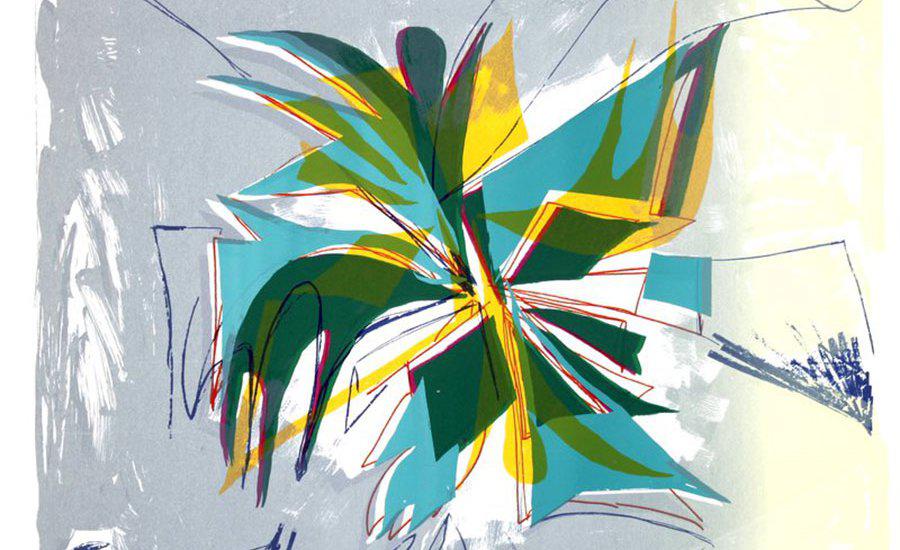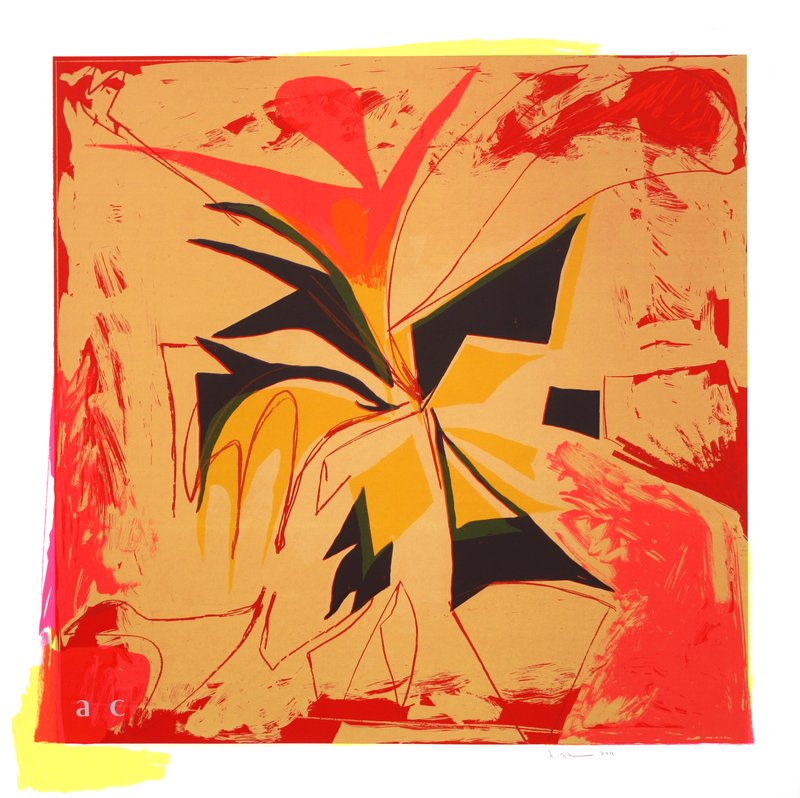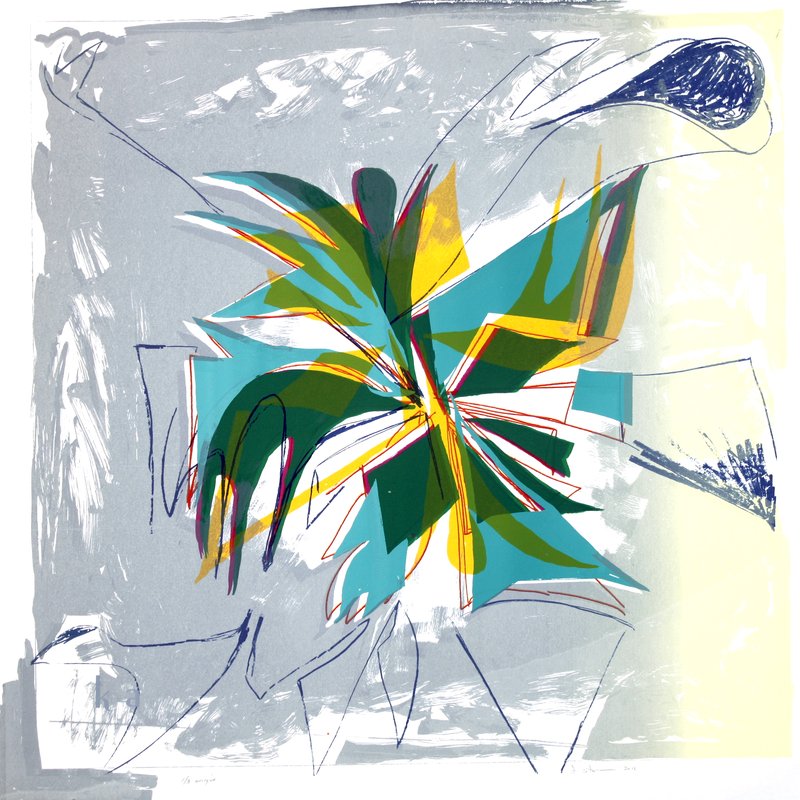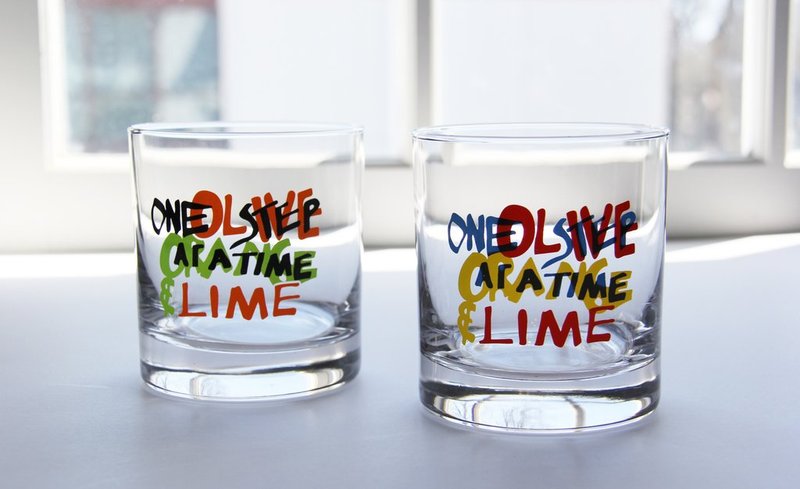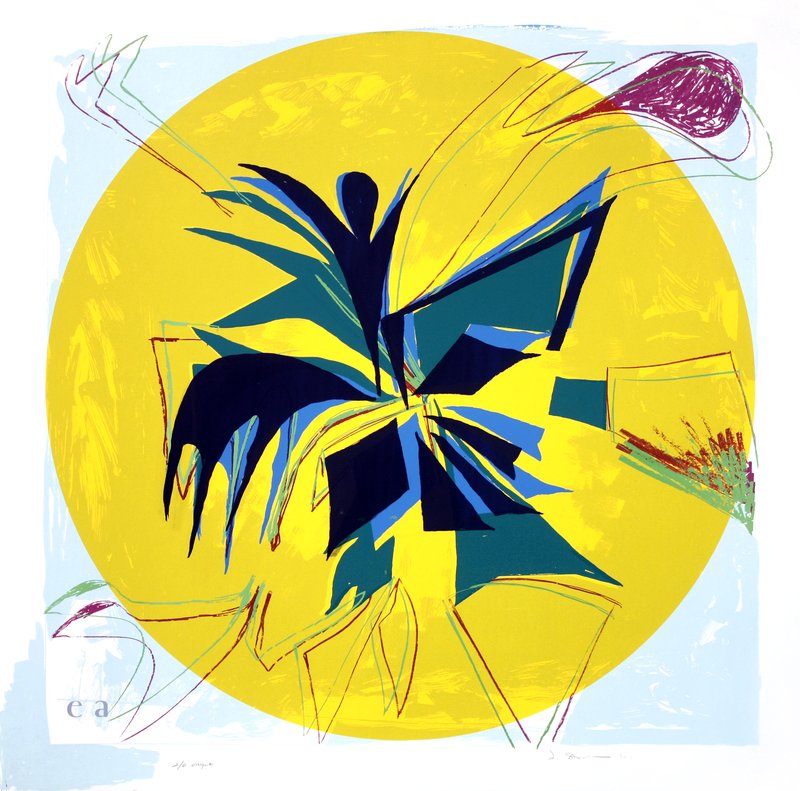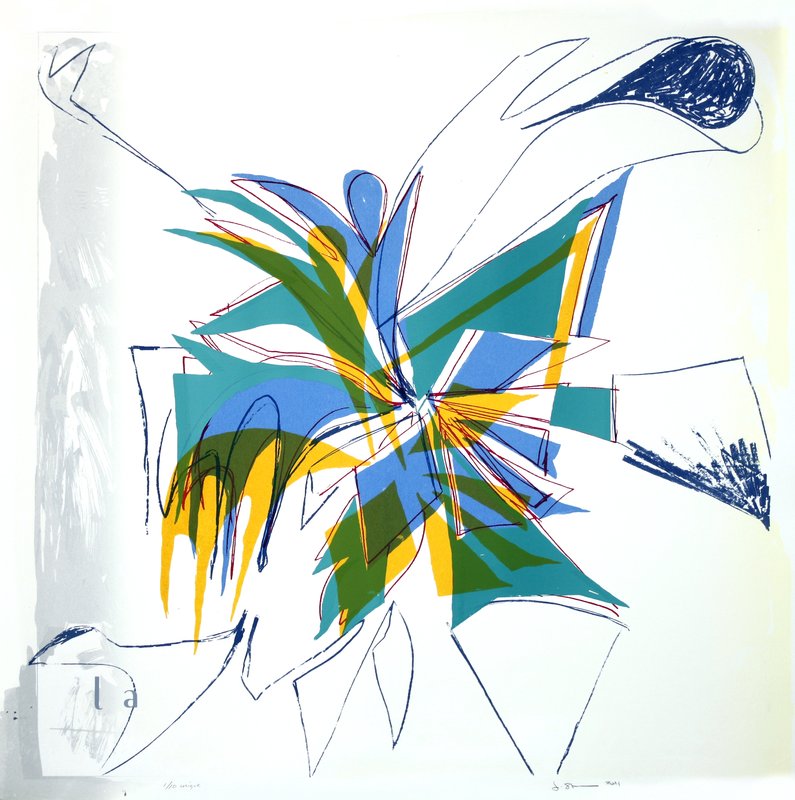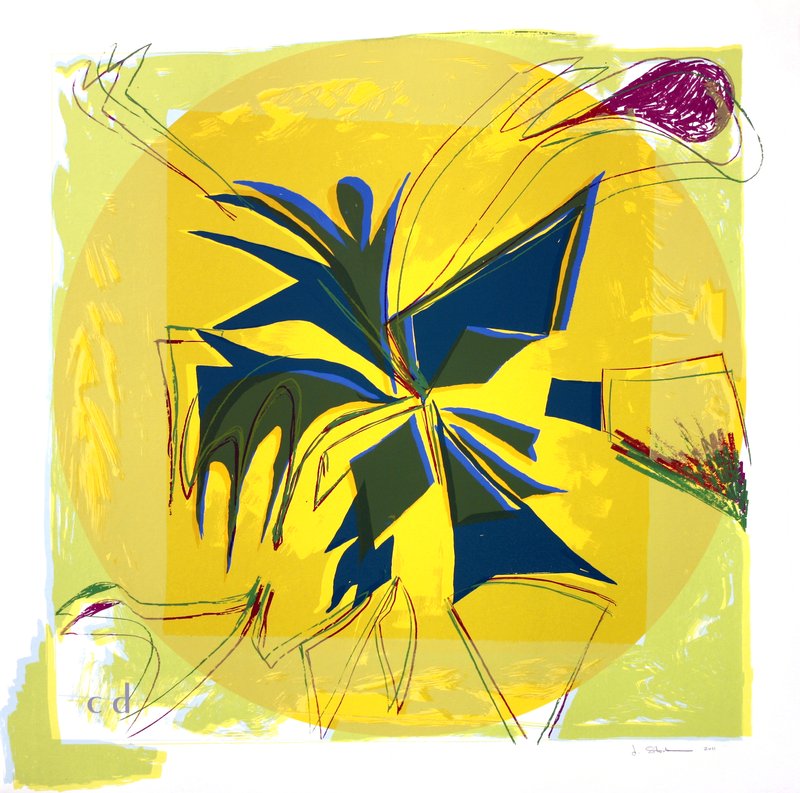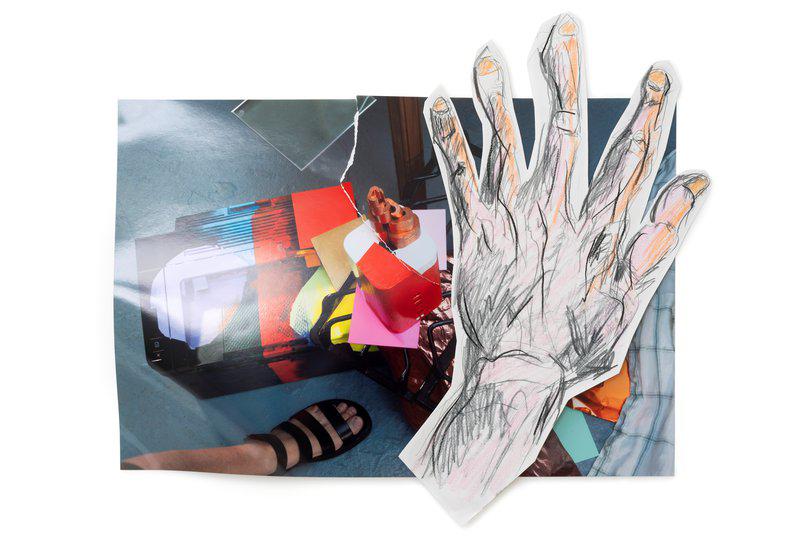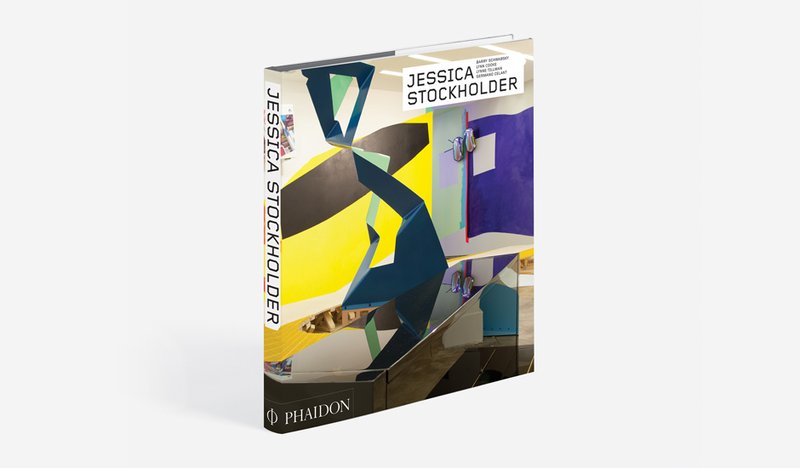Seattle-born, Chicago-based Jessica Stockholder is one of a generation of artists who have broken down the boundaries between painting, sculpture, and architecture to create a new perceptual space.
In her work, found objects ranging from oranges to neon tubes, discarded household fabrics, and decontextualized building materials are massed and lyrically intertwined with profusions of vivid color.
Recognized since the early 1990s as a pioneer of contemporary installation art, her work erodes the boundaries between mediums, echoing color field painting and post-painterly abstraction even as they defy flatness.
Her architectonic installations engulf the viewer, recalling Dadaist collages redefined through a postmodern sensibility.
Here, excerpted from Phaidon's Contemporary Artist Series monograph , is a conversation between Stockholder and the novelist, short story writer and cultural critic Lynne Tillman.
LYNNE TILLMAN: Did you paint when you were a kid?.
STOCKHOLDER: Yes. I remember getting into a mood where I just wanted to make something. It was always a frustrating experience. I felt that I lacked facility, that I was inept.
TILLMAN: How did you know what to measure against?
STOCKHOLDER: My mother painted. For a while. I painted next to her. I remember making one painting that was a sort of stage with figures on it. It was an orange and black painting.
TILLMAN: You still make stages – platforms, ramps.
STOCKHOLDER: In a journal I have from when I was a kid, I have a dream written down about yellow newspaper. I’ve used a lot of yellow newspaper in my work. This is un-stretched canvas, with little bits of pieces of stuff stuck on it. Actually it’s cloth, not canvas. There are different pieces of cloth stuck together, painted, then there are bits of acrylic paint – this was in 1980.
TILLMAN: Do you have a name for it?
STOCKHOLDER: I didn’t title pieces until much later … These are made with pieces of cloth and stuff stuck together.
JESSICA STOCKHOLDER - ac tree, 2011
TILLMAN: Did you go to art school?
STOCKHOLDER: No, I went to university. Earlier I studied with Mowry Baden, who’s
a sculptor. He’s a friend of my father’s. When I was fourteen, I had private lessons. He taught me to draw – line drawings of objects that became quite abstract. He taught me to appreciate the surprise of making something unexpected. He would talk about the drawing in terms of how it addressed the page. It wasn’t about representing the thing that was on the table.
TILLMAN: Most artists, writers too, recapitulate a number of different styles. It’s about working with a language. You have to figure out what’s already there, then see what you can do with it.
STOCKHOLDER: Here’s my Larry Poons. And this is one of the first paintings where I started to break up the pieces, so that there’d be space between the things on the wall.
TILLMAN: How did that come to you: to begin using cloth and …
STOCKHOLDER: Mowry spoke about the un-stretched pieces not having integrity as objects.
TILLMAN: Why was that?
STOCKHOLDER: The cloth hanging on the wall was flimsy. He talked about the easel painting as a small replica of the wall it hangs on. He pointed to architecture giving meaning to the historical structure of painting. This way of thinking made a lot of sense to me. I later found similar ideas discussed by Brian O’Doherty in The White Cube. Though his view of painting’s history is more cynical. An un-stretched canvas hanging on the wall doesn’t provide a place to take off from the material and forget it’s there.
JESSICA STOCKHOLDER - Two and Fro, 2015
TILLMAN: Is it a neither here nor there state?
STOCKHOLDER: For me painting is wonderful because it provides a place to forget the material, even while your attention is drawn to it.
TILLMAN: How do you mean? – forget the material –
STOCKHOLDER: I use material as a place to make fiction, fantasy and illusion. When this happens, attention is drawn to something abstract and separate from the material – the physical paint and canvas.
TILLMAN: Do you use a material in order to forget it?
STOCKHOLDER: I like there to be places where the material is forgotten; but I also love to force a meeting of abstraction with material or stuff. Colour is very good at this, always very ready to assert itself as independent of material.
JESSICA STOCKHOLDER - ka tree, 2017
TILLMAN: You moved from painting on paper, to un-stretched canvas, then to bits of cloth, things stuck on cloth, to something that begins to fill a whole space.
STOCKHOLDER: I can show and tell you how that happened. In this work, I found painted boards and stuck them to the wall. The little pink wiry thing comes out from the wall onto the floor, and a piece on the edge goes up through the ceiling. So, though this piece is still very rectangular and framed by the wall, it poked out a little bit, up through the ceiling and onto the floor.
TILLMAN: When was this?
STOCKHOLDER: 1980.
TILLMAN: When you became more interested in the space between things, objects started coming off the wall. You became interested in the space between two objects – and the wall itself. Did you feel that you were involved in a critique of painting and a critique of the institution of the gallery?STOCKHOLDER: I don’t think I work from a space of critique. My work isn’t, in the end, a critique of anything. It’s more of an exploration. I work against the kind of polarization that’s implied by the word critique. I could critique the institution, and I certainly have feelings of criticism about institutions, but it’s undeniable that my work depends on the institution that is art.
TILLMAN: That’s a contradiction that everybody lives with – whatever system one’s in. The scientific, academic or literary community. You work within it.
STOCKHOLDER: I have always felt uncomfortable in museums and galleries. There’s a kind of a deadening in those places that I work in response to. I try to bring the work closer instead of having it all framed off and moved from me. Even so, I love what the art institution makes possible; there’s a kind of intensity and it’s a place where you can express anything, and explore any thing without hurting your neighbour. Art is elevated – presented as special. This makes it possible to pay close attention to very
wonderful mundane things.
TILLMAN: Without that distinction, between art and something else –
STOCKHOLDER: It just runs into brushing your teeth.
TILLMAN: Warhol confounded that, problematized it. If you make a picture of a soup can, you will think about what’s outside the frame of that picture, and maybe you will think differently about that ordinary can. Representing it takes it out of the realm of the so-called ordinary.
STOCKHOLDER: I try to bring some of that specialness, or heightened quality, from art-making to the ordinary. This work was outside at the University of Victoria. The little pieces of wood are painted and hinged. There’s a figurative element too. This piece never was finished; it was just arranged. I was thinking about the colour being thrown around, an idea I’m still interested in. the planes of wood were throwing colour back and forth or reading across to each other. The colours bridge the space at the speed that’s much quicker than walking. So the interaction of the colour starts to feel abstract, as though it’s not material. And me moving, I’m another kind of material.
JESSICA STOCKHOLDER - One Step at a Time,
TILLMAN: How did you move into installation?
STOCKHOLDER: Installation is a very poorly defined word. The earlier work started to elbow the space of the wall. It doesn’t seem like such a huge jump to dealing with the spaced of the room. In 1982 Barbara Fisher invited me to put drawings in a show at Open Space Gallery in Victoria. I didn’t want to put drawings in the show.
TILLMAN: And then she said: You can have this space to do anything you want?
STOCKHOLDER: Yes. This was the first time I consciously addressed the space rather than just the wall. I’ve kept doing it. It certainly doesn’t make life easy! And installation has become so prevalent a part of art-making. People don’t buy it for their homes, to be cute about it. You set up a challenge for yourself. There’s not much of an art market in Canada. As an art student I wasn’t thinking about selling work, and I had no place to store it, so I didn’t think about keeping it.
TILLMAN: It’s almost impossible for me to imagine – not keeping one’s work.
STOCKHOLDER: I keep the slides. The process is what matters to me – making the work, how one work leads to another, and how showing the work and having people look at it and talk about it feeds it
TILLMAN: That fits in with some of the art movements of the 1960s and 1980s which were responding to the object-orientated nature of art.
STOCKHOLDER: It was in the air. Mowry was very much involved with thinking about how art objects function politically within an economy; this was all part of the discussion around me
TILLMAN: A curator says: Here are these walls. Instead you want to use the whole space. To do something that fills that space or speaks about space. Takes it up or shows some sort of relationship to it. That’s intriguing not only formally, but also psychologically.
STOCKHOLDER: It’s an attempt to make things immediate.
JESSICA STOCKHOLDER - ea tree, 2011
TILLMAN: I don’t know that writing functions in that immediate way. Maybe it does.
But the process of reception –
STOCKHOLDER: The way I read is probably more immediate than you would like!
TILLMAN: Maybe the way I perceived art is less immediate than you would like. I don’t think about tactility, a word that crops up about your work. Some artists want the sense that this could be something you’d want to touch. In some way I guess I don’t feel myself in the world physically. Although you push that. In the piece with a ramp, The Lion, the Witch and the Wardrobe (1985), I understand it as something goes nowhere.
STOCKHOLDER: How do you see that?
TILLMAN: Usually a ramp leads somewhere. Again you take something that has a function and use it in a way that calls attention to it as other than its function – ramps take you from one place to another. Now, it does take me from one part of your art work to another. But it’s in such an absurd way that it speaks to me of a certain futility – about going anywhere. I’m a pessimist, but it did confront me, made a physical impression on me. I don’t know if that means ‘tactility’. I think of it as this object in the room –
STOCKHOLDER: – calling attention to itself as a thing, yes. That’s what I like to do.
TILLMAN: Your later work pushes that, off the wall. You seven make your own walls. Architecture’s ‘the art of science of building’. Not one or the other – both. In a sense you can take your choice. Science and art relate to your work.
STOCKHOLDER: I once proposed a work for the San Francisco Exploratorium, a science museum with an artist in residence program. I proposed that it was a matter of scientific interest to what degree we brought information with us that coloured our vision when faced with art. They didn’t go for it. I began making art without much sense of the physical world and discovered how much it mattered to me through the process of working. It was a part of the world I was able to encounter entirely on my own terms.
JESSICA STOCKHOLDER - la tree, 2011
TILLMAN: It’s also about making a place for itself, for oneself. In the world. If you enter a space, as you did at Open Space Gallery in 1981, and decide: no, I won’t hang on the wall, I’ll be this space. It’s like making yourself, constructing yourself also.
STOCKHOLDER: The work has always functioned as a place to affirm my subjectivity. That we have intense subjective response to objects is curious. It can’t be denied.
TILLMAN: The way you treat that subjectivity resorts to, employs, a certain level of abstraction to handle your own psychological needs. I don’t feel, when I walk into a room of yours, that I’m dealing with Jessica Stockholder’s psyche. I feel that it’s all been mediated, thought through, worked through, so that your uses of colour may indeed go back to some psychological meaning to you about colour. But it informs the work and has a resonance within the work that’s not specific to you.
STOCKHOLDER: That makes perfect sense to me. I’m trying to think about why that’s so, and why that happens. To turn something that’s intensely personal into something that’s publicly available.
TILLMAN: It’s one of the fascinations about making art, writing. In my writing I’ll use ‘I’, and it’s usually not me. Yet there is the desire to write it, or just to write, which is from oneself. You became engaged in the space between two objects. That wall – maybe the wall was you, between you and the world.
STOCKHOLDER: When I began I experienced architecture as a kind of given. Buildings were the world. A building was as much a given as the fact that the ground is made of earth. Through my work, I’ve come to understand that buildings are invented by other people as was our history, civilization and society – it’s all made by people, it’s not a given.
JESSICA STOCKHOLDER - cd tree, 2011
TILLMAN: To me your work is filled with words, with metaphors, that I as a writer can immediately, and not the way you want me to, probably, translate. I’m beginning to be more aware of the physical
world, of the built environment, let’s say, than I was. I’m even more aware of birds. But it’s taken me a long time.
STOCKHOLDER: Me too. I start from a place that’s not unlike what you’re describing. Only I don’t have the words. I don’t trust the words.
TILLMAN: I don’t trust them exactly. I use them. I don’t believe they say everything, but, obviously, I want to be working with them. Maybe I’m interested in visual material as much as I am because there may be some similar sources to making it, but it’s translated into something I could never accomplish. Especially in three-dimensional forms. To be that’s one of the strangest, hardest things to do.
STOCKHOLDER: It’s funny, in some ways, that’s also true of me. I started on flat surfaces, with planar images. To make them three-dimensional was a challenge. I could conceptualize, and had a real facility with things on a page, graphically, but I couldn’t, and still have difficulty, conceptualizing in three-dimensions. I don’t begin installations knowing what they’re going to be in the space. As my work grows, part of the challenge required to respond immediately, where I can’t predict the outcome.
TILLMAN: Maybe that’s why I find jokes in your work. One’s a play on the truism that art is organized out of chaos. There’s chaos in your art. There’s clearly a mind at work organising, with a system, responding to the space, but it’s discomforting. Your work asks: where do I look first? It’s not organized so that there’s a front, or a frontal perspective. You don’t have a vanishing point. At least I can’t find it.
STOCKHOLDER: There isn’t one.
TILLMAN: In Western art, the vanishing point, frontality, and other devises, organize it, so as to organize vision, the world – but there’s another sense of organization in your work.
STOCKHOLDER: Part of the work is highly ordered and organized, and part of it just lays where it falls. To use a visual metaphor for this idea – objects in the place of ideas – if I use five different objects, parts of them will fit together in a very tight, formal way, and the rest will just hang out chaotically. Another way to visualize my order in chaos is to imagine a bunch of threads over-lapping in one place. Where they overlap, things are tight and ordered. But the ends fly off in a million different directions, often having nothing more to do with each other.
TILLMAN: That’s a scary way of working. There’s not a contradiction but odd consequences. On the one hand you want the viewer’s experience to be of the same order as the experience of walking down the stairs and going to a place. On the other hand – this may be what your experience of the world is – you make a disorderly organization. A disquieting, sometimes demented –
STOCKHOLDER: Yes!
TILLMAN: … bunch of things.
STOCKHOLDER: Yes, it’s amazing that things work as well as they do. I am not interested in making work that pretends the world is not like that. But I do appreciate the work of Richard Long. He’ll place a bunch of stones in a circle, or a path. He works out in the landscape. His work is very cohesive, and ordered – round things, or square things – very unified. I think his work functions as meditation.
JESSICA STOCKHOLDER - Choices, 2019
TILLMAN: Your art doesn’t leave room for rest. It’s not a resting place. In the way you were describing the Long work, one could, as in Noguchi’s, imagine standing, looking, and feeling a sense of quiet.
STOCKHOLDER: I miss that in life!
TILLMAN: Maybe that’s why he does what he does. He wants …
STOCKHOLDER: – to make it.
TILLMAN: Maybe it represents what’s missing in his life. Or what he thinks life –
STOCKHOLDER: – needs.
TILLMAN: You might want that, but insist instead: I don’t find it anywhere. I don’t know that I can make that, in order to say this is as it should be.
STOCKHOLDER: Though I agree there’s no quiet place in my work that compares with the quiet of Noguchi or Long, there are places in most of my pieces where you as viewer are definitely outside, looking as a quieter, static whole.
JESSICA STOCKHOLDER - da tree, 2011
TILLMAN: It seems that you use two kinds of titles, one kind seems to refer more to narrative.
STOCKHOLDER: Narrative is something I’m trying to find a way to talk about now, though I’m not sure ‘narrative’ is the right word. There is a kind of building or layering of meaning that results from the literary content of the objects I use, but the structure is not linear. There is no beginning, middle or end. My aim is to throw the next as wide as possible, even while there are focused in areas of literary meaning that develop here and there.
TILLMAN: Some of your titles are long and specific about the thing itself, about naming itself. For example, Yellow sponges, Plexiglas, small piece of furniture, newspaper maché, plastic, oil and acrylic paint, cloth, small blue light and fixture, glass on the wall, 1990. All the elements are named, yet the piece is not merely an aggregate of those elements. The pieces with the long titles are more, it seems to be, object oriented and can be taken in my standing in front of them. They seem to be more about painting, the limits and possibilities of painting.
STOCKHOLDER: The titles consisting of a long list of objects are titles by default. My intention was to leave these pieces untitled. I always request that there be no title – and that the word ‘untitled’ not be used. In many cases the list of materials is used instead of a title. People just can’t get their heads around the space being blank where they’re used to seeing a title. But I’m not unhappy about the conversation this has given rise to. When I do use titles, I often work with the words in a way that feels parallel to the
way I work with objects. I like the title to work alongside the piece rather than lead you down a path.
Take a look at the revised and expanded Phaidon Contemporary Artist Series monograph Jessica Stockholder here .











